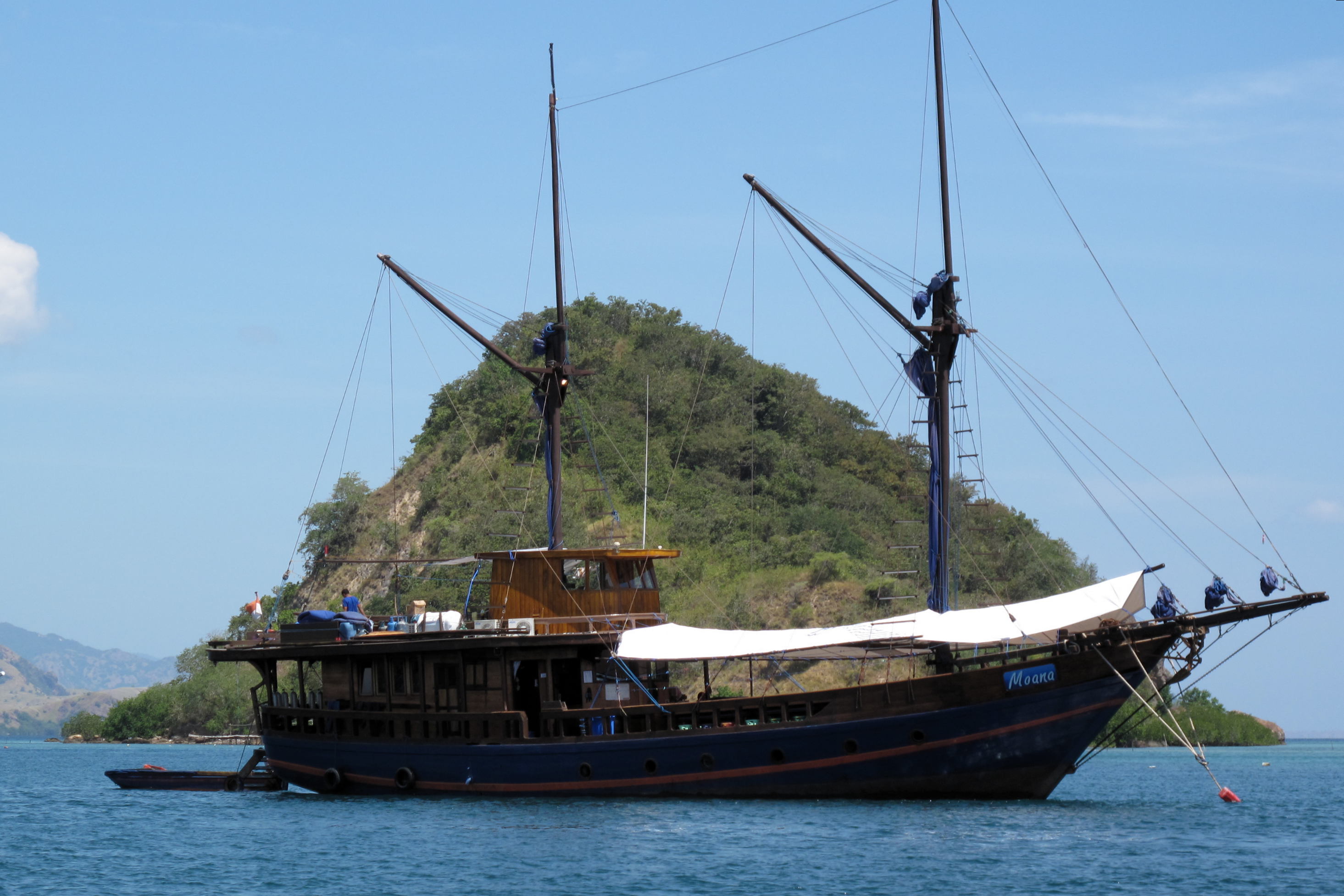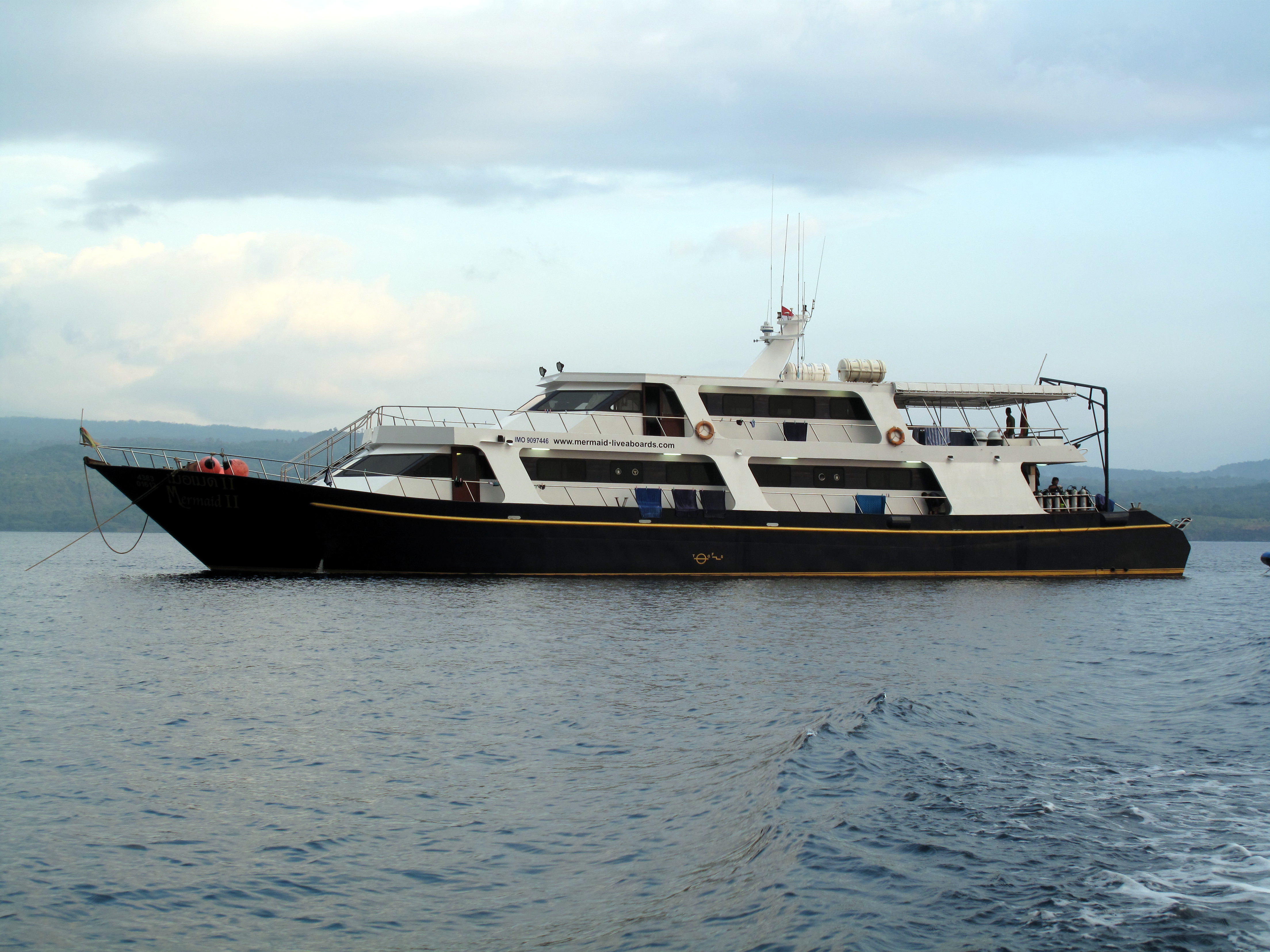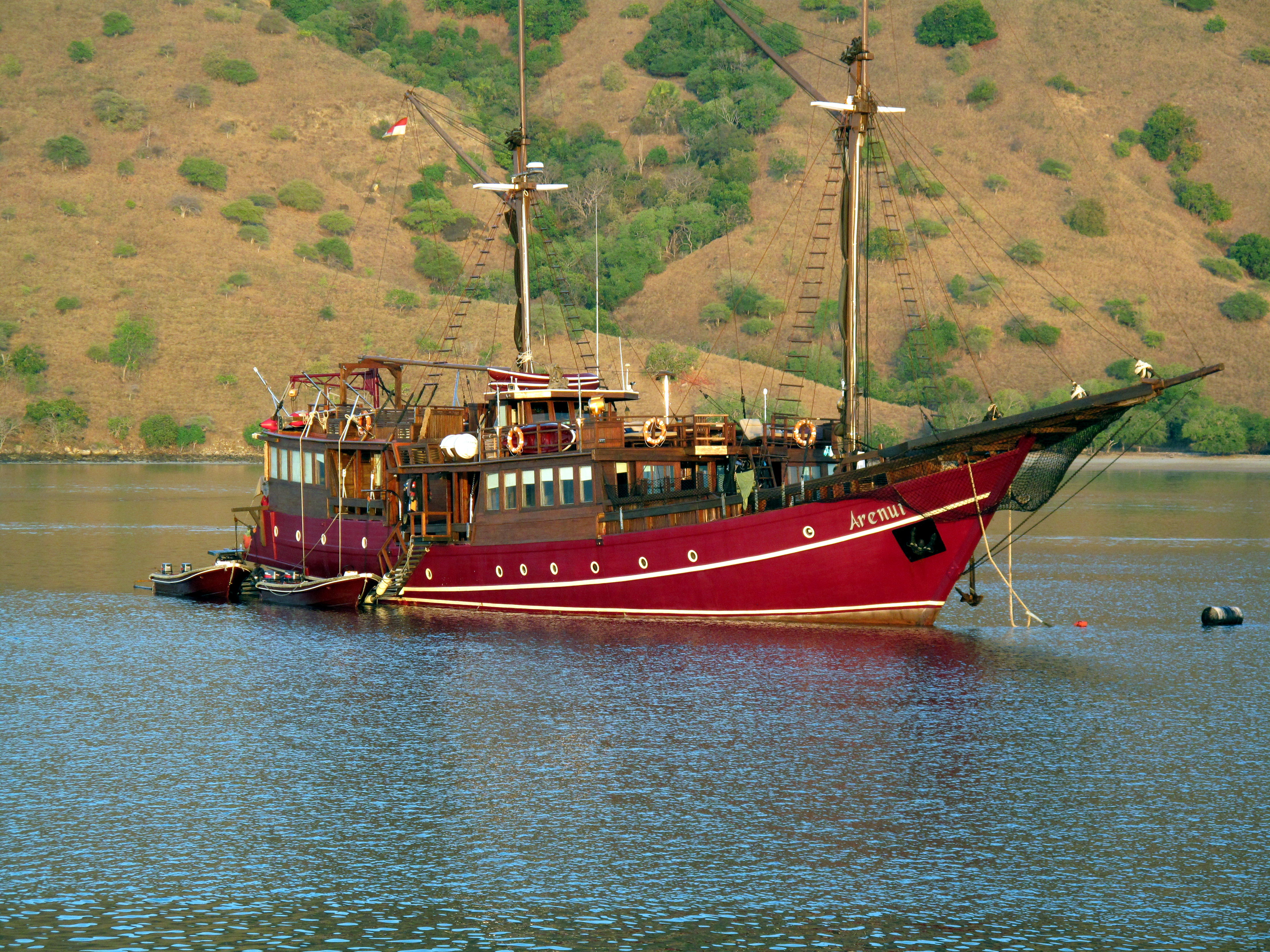Komodo is the largest of a group of around 90 islands in the sea between Sumbawa and Flores. While Komodo is famous for its "dragons" - the world's largest lizards - it's also one of the world's premier diving areas. The waters here are rich in diverse marine life, and many of the reefs are untouched by the ravages of over-fishing.
One of the reasons that Komodo remains such a great dive destination is that it is still relatively remote. It's really only accessible by live-aboard cruise. Boats departing from Labuan Bajo on Flores take about two hours to reach the dive area, while boats from Bali take more than a day to reach the western edge of the national park, but also give you the chance to dive some really fantastic sites around Sumbawa Island, to the west of the park.
While the diving is great, it also can be very challenging. The currents around many of the dive sites can be quite strong, and every year one or two divers get swept away. Most of them eventually turn up alive on one of the deserted beaches.
One of the challenges of documenting Komodo's dive sites is that many of the sites have no common name. Each dive operator might have their own name for a particular spot. Also, many of the small islands have several good sites around them. I've tried to document as many as I could, and research the most common names for the sites.
Komodo Park Entry Fees
The waters around Komodo Island are part of a national park, and require the payment of entrance and usage fees. The amount of fees depends on the length of stay. Expect to pay around US$75 for a typical five or six day dive cruise.
Getting There
The only way to reach Komodo is by boat. The closest airport is Komodo Airport at Labhuan Badjo on the island of Flores, about a two hour cruise away from Komodo Island. Many live-aboard cruises depart from Labhuan Badjo, although there are a few that cruise to or from Bali.
Several airlines fly from Bali to Komodo Airport. These include Merpati, Riau, and Indonesia Air Transport.
Live-aboards

Photos of the liveaboard dive boats working around Komodo. Click on any of the thumbnails to see the full size image.
There are a couple of dive shops in Labuan Bajo that do day trips out to Komodo, but with a two to three hour commute each way, it's not really practical if you want get any serious diving in. Plus, there aren't really any good places to stay in the small town. If you really want to get the most out of diving Komodo, you need to select a live-aboard cruise. Both Dive the World and Sunrise Divers have multiple boats listed, in several price ranges.
Note that there are several routes to chose from for liveaboard to Komodo. The 'short' route has boats leaving out of Labuan Bajo on Flores or Bima on Sumbawa and returning four to six days later. The 'long' route has boats departing Bali and sailing to Komodo over the course of a couple of days. This gives you the chance to dive some of the spectacular sights around Sumbawa. In the end, which route to choose is usually a matter of how much time you have, since the trips form Bali usually last at least a week, while there are shorter options out of Labuan Bajo.
- Mermaid II
- This large boat makes week-long trips from Bali to Komodo and back. From November to April it works the Andaman Sea routes in Thailand and Burma.
- Moana Cruising
- I first visited Komodo aboard the Moana, and I have to say it is an extra-ordinary value for money boat. Note that the number of divers they can handle is limited.
- Dive Damai
- The Damai 'fleet' now has two luxurious boats working Komodo, Raja Ampat and other destinations in Indonesia. See the MSY Damai review at DiveHappy.com
- Adventurer II
- A wooden Phinisi style ship claiming to set a new standard in Indonesia luxury liveaboards.
- Sunrise Divers
- The Sunrise web site has one of the best selections of all the available liveaboard operators working Indonesian, Thai and Burmese waters.

